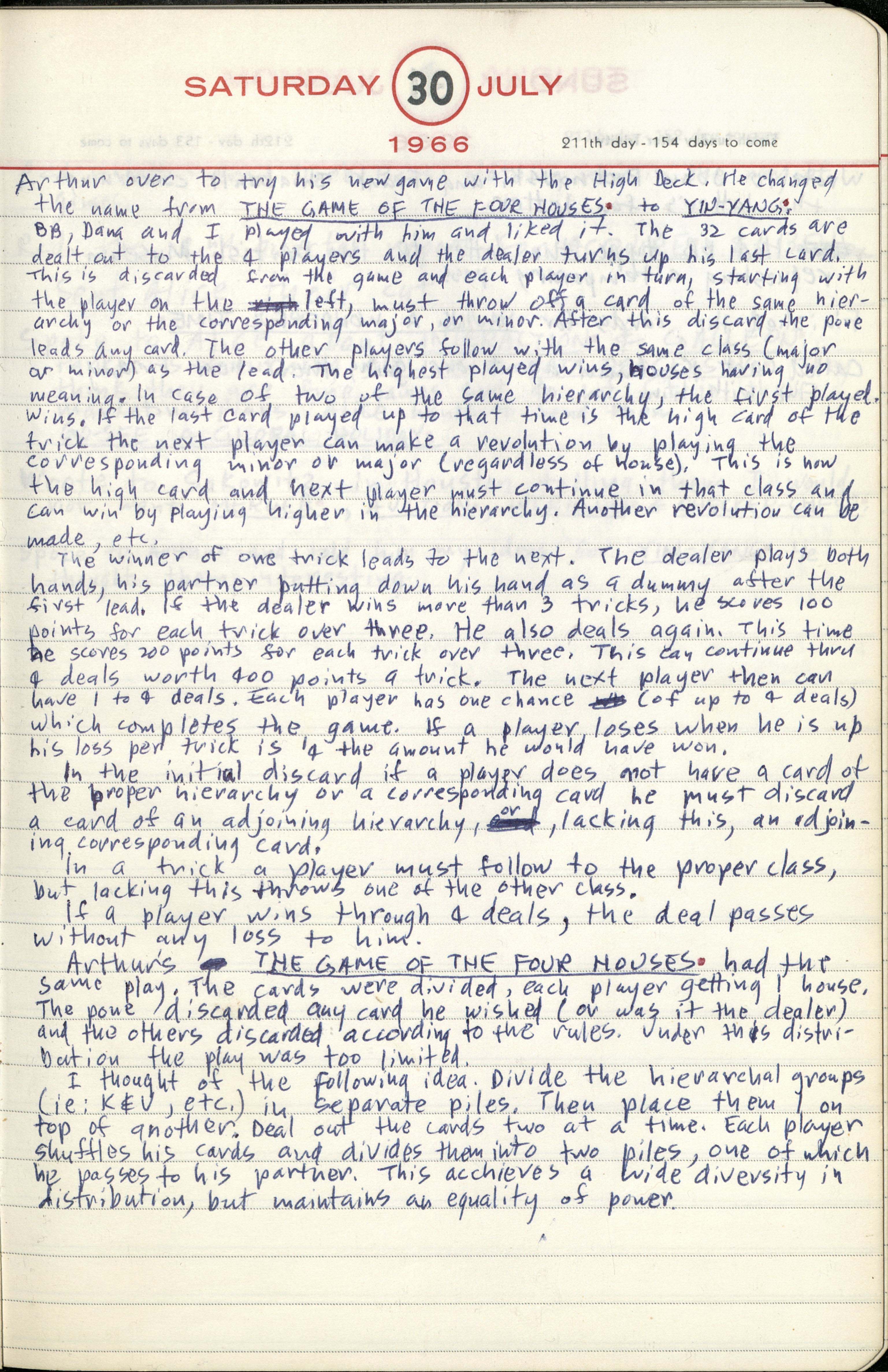Notes for 1966_Sackson_231_July 30.jpg: Page #1
Original title: 1966_Sackson_231_July 30.jpg

Transcription
SATURDAY 30 JULY 1966 211th day - 154 days to come
Arthur over to try his new game with the High Deck. He changed
the name from THE GAME OF THE FOUR HOUSES to YIN-YANG.
BB, Dana and I played with him and liked it. The 32 cards are
dealt out to the 4 players and the dealer turns up his last card.
This is discarded from the game and each player in turn, starting with
the player on the righ left, must throw off a card of the same hierarchy
or the corresponding major, or minor. After this discard the pone
leads any card. The highest played wins, houses having no
meaning. In case of two of the same hierarchy, the first played
wins. If the last card played up to that time is the high card of the
trick the next player can make a revolution by playing the
corresponding minor or major (regardless of house). This is how
the high card and next player must continue in that class and
can win by playing higher in the hierarchy. Another revolution can be
made, etc.
The winner of one trick leads to the next. The dealer plays both
hands, his partner putting down his hand as a dummy after the
first lead. If the dealer wins more than 3 tricks, he scores 100
points for each trick over three. He also deals again. This time
he scores 200 points for each trick over three. This can continue thru
4 deals worth 400 points a trick. The next player then can
have 1 to 4 deals. Each layer has one chance wh (of up to 4 deals)
which completes the game. If a player loses when he is up
his loss per trick is 4 the amount he would have won.
In the initial discard if a player does not have a card of
the proper hierarchy or a corresponding card he must discard
a card of an adjoining hierarchy, and or, lacking this, an adjoining
corresponding card.
In a trick a player must follow to the proper class,
but lacking this throws one of the other class.
If a player wins through 4 deals, the deal passes
without any loss to him.
Arthur's p THE GAME OF THE FOUR HOUSES had the
same play. The cards were divided, each player getting 1 house.
The pone discarded any card he wished (or was it the dealer)
and two others discarded according to the rules. Under this distribution
the play was too limited.
I thought of the following idea. Divide the hierarchical groups
(i.e. : K & V, etc.) in separate piles. Then place them on
top of another. Deal out the cards two at a time. Each player
shuffles his cards and divides them into two piles, one of which
he passes to his partner. This achieves a wide diversity in
distribution, but maintains an equality of power.